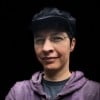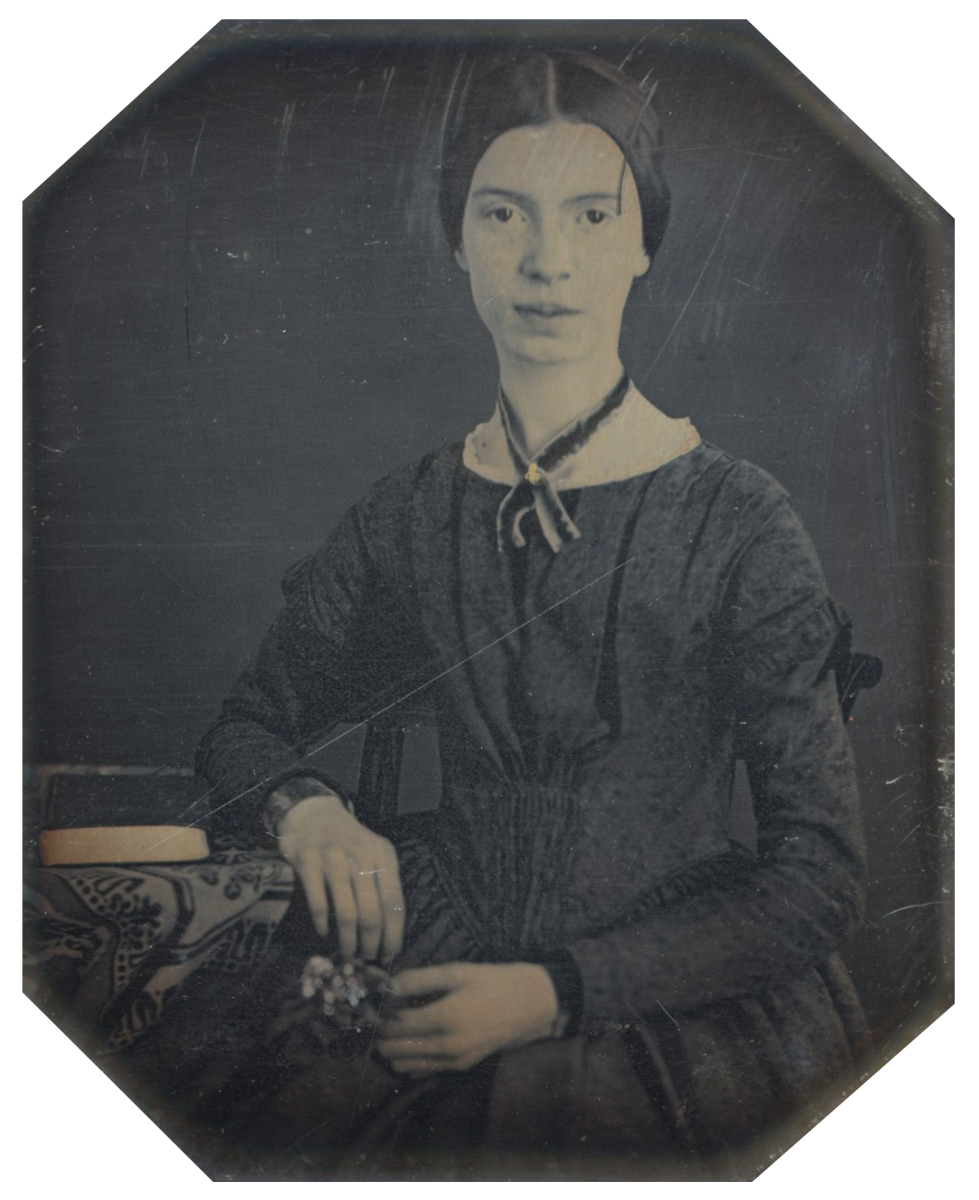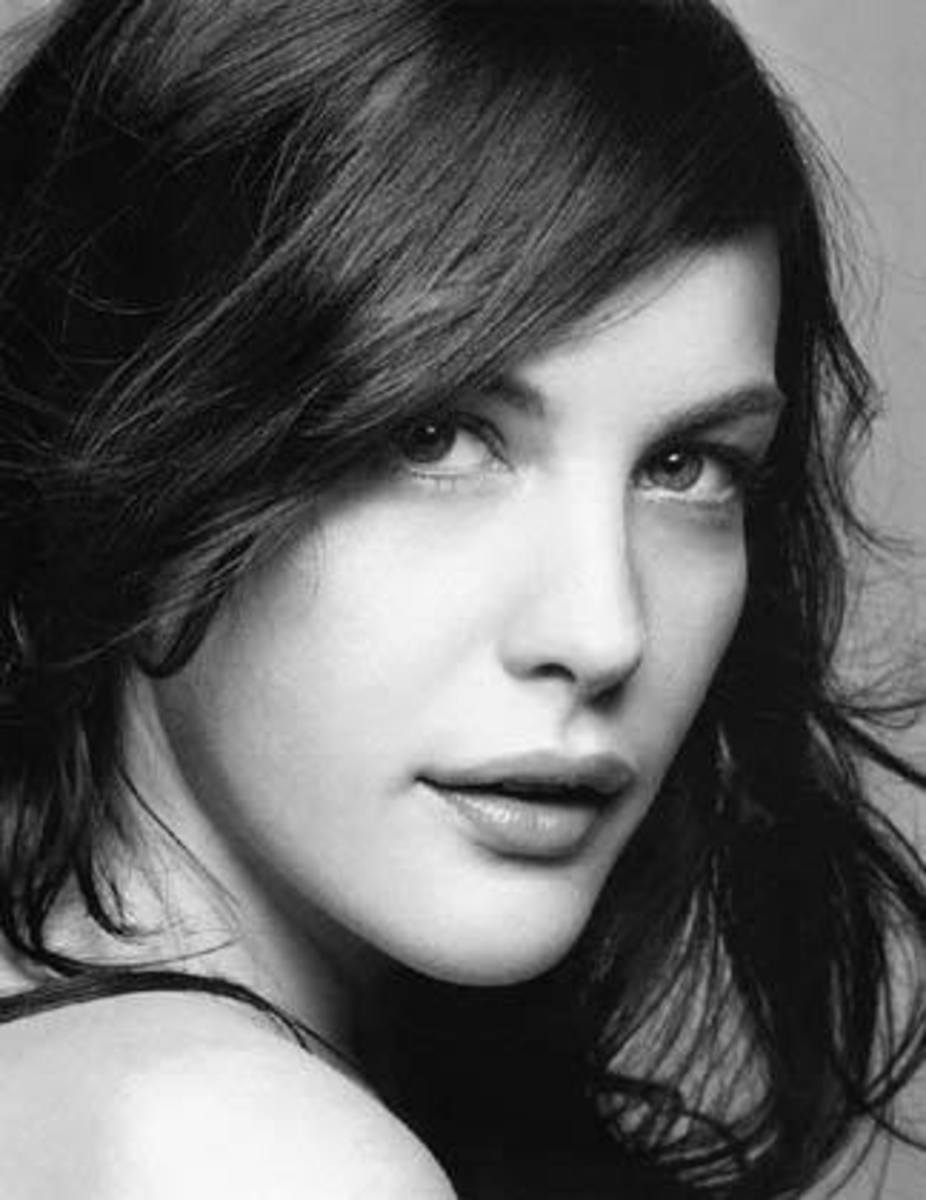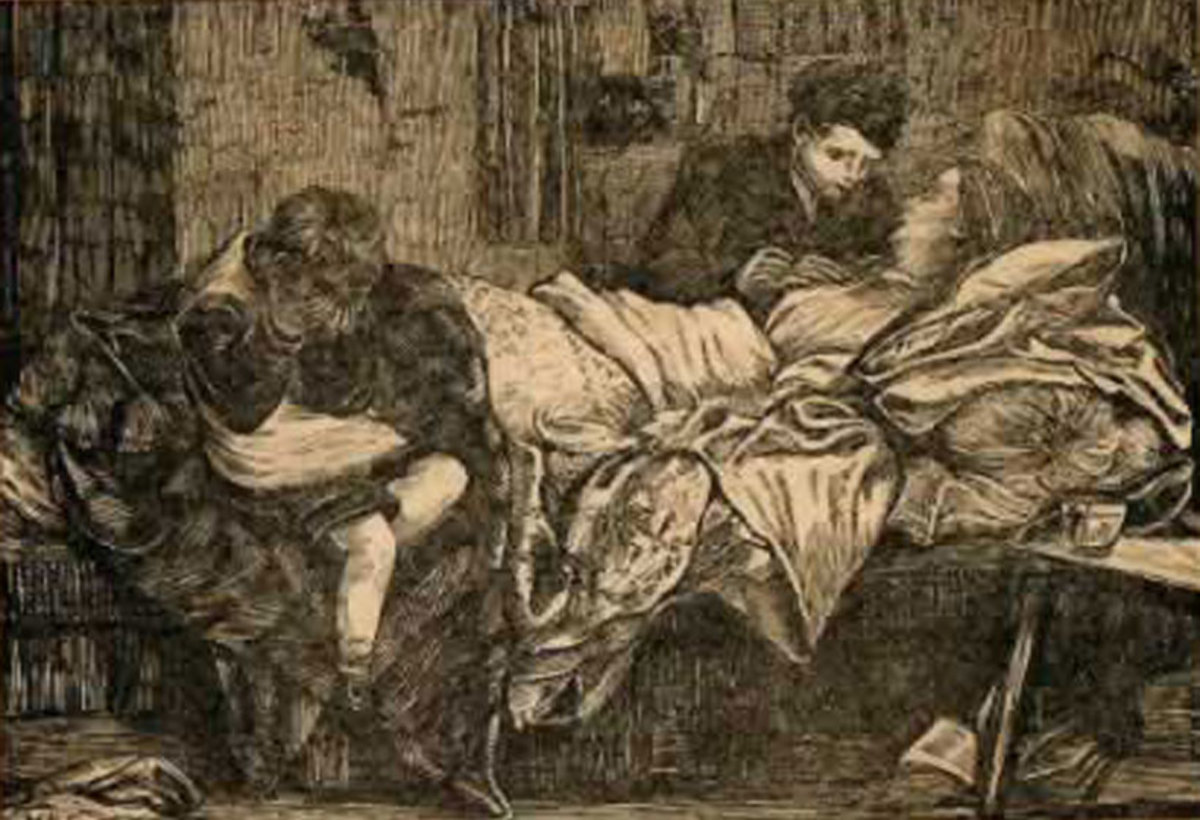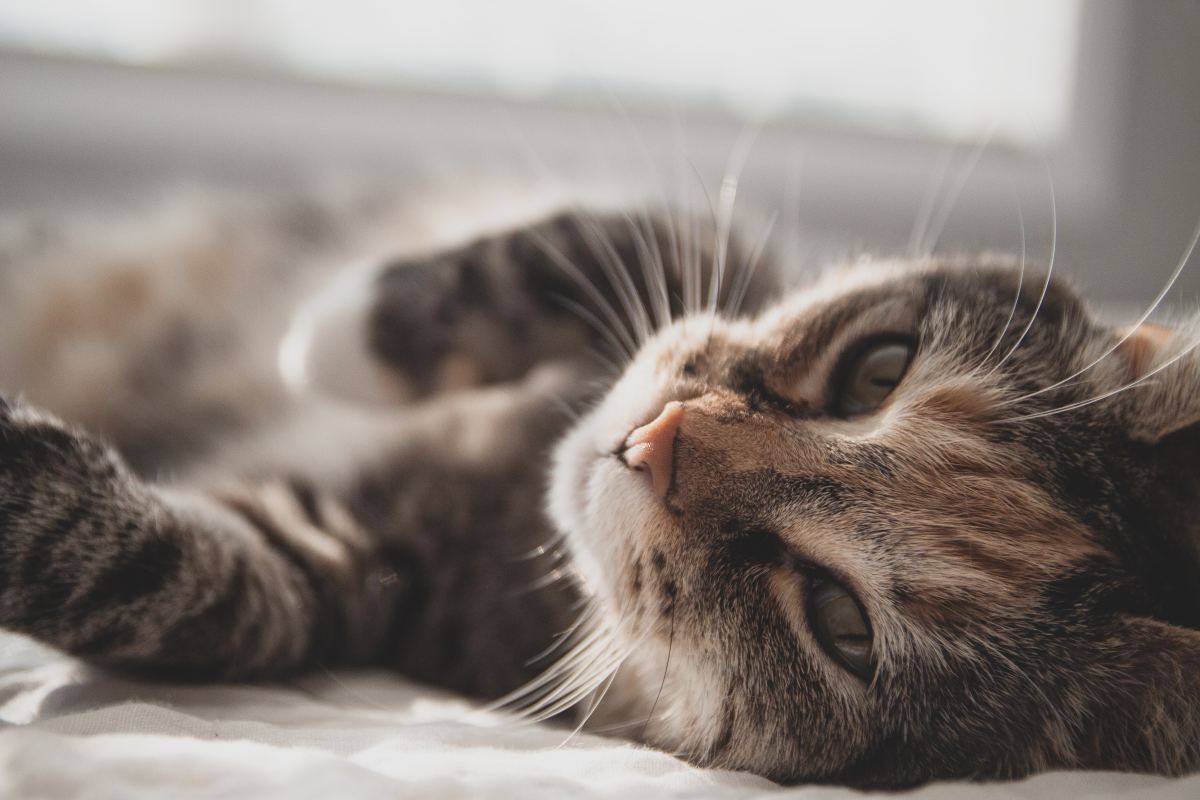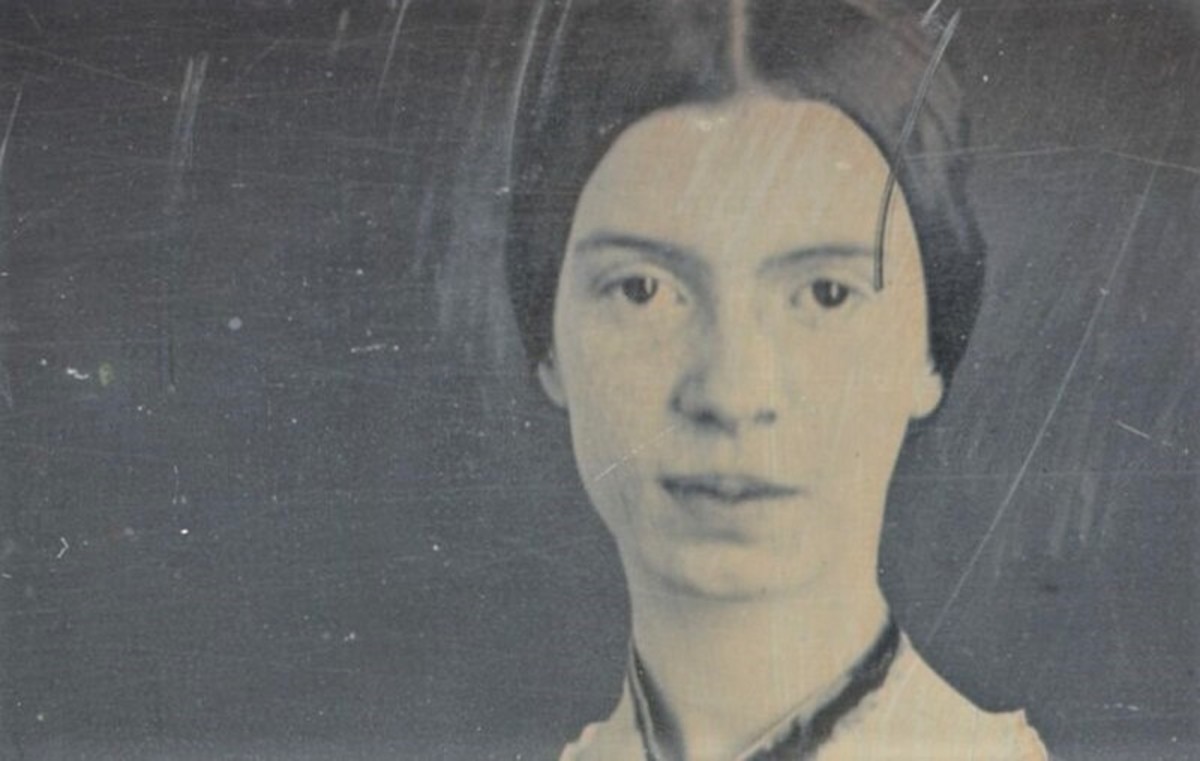10 Inspiring Women - What They Mean To Me
A List of Inspirational Women
This list of inspirational women isn’t just a random one. Though I’ve never met them (well, at least I haven't actually shaken their hands), they each have impacted my life on a very personal level. Over the years, as I’ve heard their stories, read about them or seen their work, I took to heart their intrepid spirits, their tenacity and their willingness to remain loyal to their cause despite long odds.
Each woman is or was a pioneer in her own right. Their lessons have inspired me to become more, push harder, and to relentlessly pursue my own goals, even when I’m not feeling my best.
I compiled this list in no particular order - I feel that each person has influenced me equally.
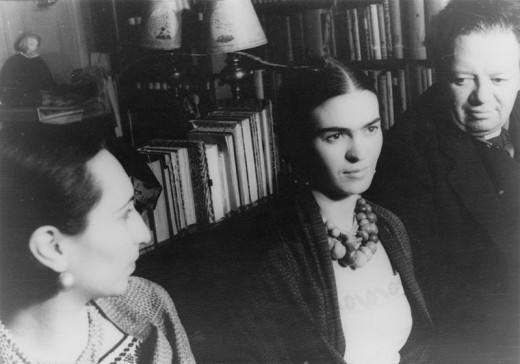
Frida Kahlo (1907 – 1954)
Frida Kahlo was a woman who suffered polio when she was quite young. She recovered but in her late teens she was riding on a bus when it was t-boned by another car. She suffered multiple fractures, including several in her spine. A piece of an iron bar impaled her, going through her pelvis. She survived, but spent a year in bed, enduring intense pain and her movement was severely restricted by casts that covered almost her entire body.
She had to do something while lying there, so her family installed a mirror above her bed. She began to paint self-portraits. Her renditions were at once striking and revealing – it was as if her soul bore its way onto the canvas.
Later on, once she was able to walk again, she happened to meet Diego Rivera, a muralist. They began a long relationship, but his influence helped her to rise as a prominent artist in her own right.
Kahlo suffered intense physical and emotional pain throughout her life. But she never gave up painting. She essentially told her life's story in her artwork and the world began to "read."
When she found out that she couldn’t have children, and suffered a horrific miscarriage, she poured herself into her paintings. They embodied her suffering and people could relate to them.
How Kahlo Has Influenced Me
I have always loved art and painting. For a few years, I started doing self-portraits because in doing so, I had to reckon with myself. Because Frida had to look at herself just as she was, I, too, looked at myself as I was. She influenced my artwork in other ways. She was Latina and I have Latina roots. She loved colors – I love using colors. She had an imperfect body and I have an imperfect body.
Though I don’t paint self-portraits currently, it was Kahlo’s influence that deepened my appreciation for art and forced me to look at and accept myself exactly as I am – and to be proud of it.
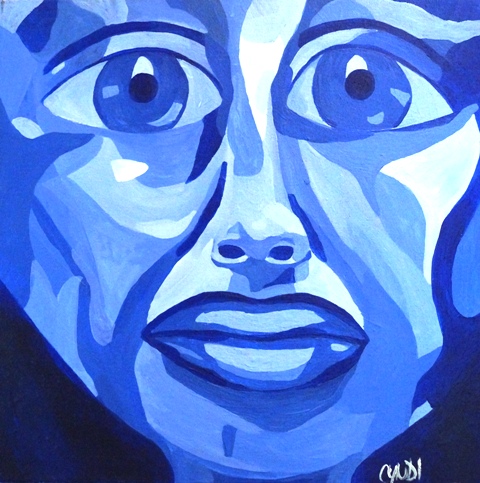
Emily Dickinson (1830 – 1886)
Emily Dickinson was an accomplished poet. She came from Amherst, MA, a small rural town at the time. Her father was quite religious and only allowed his children to read the Bible. Emily’s older brother often swiped books from his school and let his sisters secretly read them.
Emily attended Mount Holyoke Seminary for about a year, but then returned home. She was a religious person in her own way, but organized religion confounded her.
After returning home, she began to read books by prominent authors as well as classical literature. By 1858, she was writing seriously, and even finished 52 poems. With no formal training, but using her knowledge of Shakespeare, the Bible and other references, she composed poems that didn’t abide by traditional forms and stanzas. She loved using a dictionary as a reference point for her choice of words, sometimes resulting in startling word-effects.
She happened to write a letter to Thomas Wentworth Higginson of the Atlantic Monthly and included four poems. He helped her edit them. It wasn’t until after her death, however, that Higgins tenaciously finished editing her poems and sought a publisher for them.
During her life, she didn’t want to publish her poetry. She didn’t want to fail and if she succeeded, she didn’t want to be misunderstood.
Dickinson completed more than 1,800 poems during her life. Only a few people knew about these poems – even her sister had no idea!
To this day, her poems are favorites among scholars and some consider her to be a leader in the free-verse movement of poetry.
How Dickinson Has Influenced Me
I had an unusual upbringing: I grew up in a nursing home. It was a business started by my mother, who had always loved and revered the elders in society. For the most part, I didn’t mind it, but the fact that people I knew and loved would pass away with alarming regularity deeply affected me.
I was in middle school when I first came upon Emily Dickinson’s poem, “Because I Could Not Stop For Death.” When we had an assignment to memorize and then recite a poem, I chose this because it keenly spoke to me and assuaged my fears regarding death.
Dickinson was rather reclusive, as well. Though I don’t consider myself a recluse, I am an introvert. I love being home and I often feel misunderstood by my more extroverted counterparts. It’s wonderful to know that you can accomplish great things and aspire to be a notable influence even if you feel like you're not always perfectly understood.
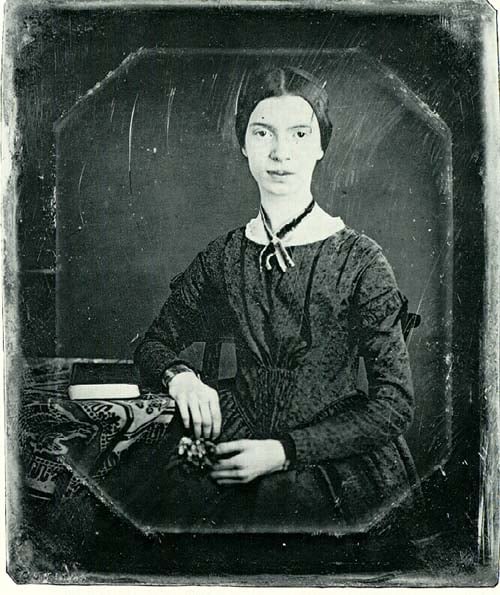
Marie Curie (1867 – 1934)
Marie Curie was born as Manya Sklodovska in Poland. She faced innumerable challenges throughout her life. Her father had been a college professor but was demoted when Russian authorities found out he was teaching in Polish. “Manya” was interrogated by Czarist investigators for this transgression because she was also studying books in Polish. Not long after, one of her older sisters died from typhus and her mother passed away after a battle with tuberculosis. It wasn’t until then did Manya understand why her mother never held or kissed her.
Later on, she became a governess, living with and tutoring two children to help pay for her sister to attend medical school in Paris. The University of Warsaw in Poland did not accept women. If there was hope in going to college for either girl, it had to be in France. Once her sister finished school and became a doctor, she sent for Manya to begin her studies at the Sorbonne.
It was at the Sorbonne she met Pierre Curie after he allowed her to study in an unused laboratory. She needed the lab for her studies in physics. He was a fellow scientist but fell in love and proposed marriage to Manya. When she married, she became Marie Curie.
Together, they worked on isolating the element radium. They didn’t have much support: there was a perpetual lack of funds, and they worked in a shed in back of the School of Physics with no heating or natural cooling. Pierre tried to convince Marie to give it up and wait until they could secure more money and a better place to work.
Marie wouldn’t give up, though. She was convinced that radium could ultimately help humanity and her primary goal was to isolate, study and figure out the uses for it.
Their work would pay off: they received a Nobel Prize in Physics for isolating and measuring the atomic weight of radium.
Marie still pursued her studies even after Pierre was run over by a horse carriage. He sustained massive head injuries and died. Marie was never the same, though.
In Pierre's place, she became the first female lecturer at the Sorbonne. As if these challenges were not enough, the press and even her colleagues hounded her for being foreign-born and a woman. Still she pressed on, and won a second Nobel Prize in Chemistry for her research.
She passed away from leukemia, brought on by radiation sickness. Her contributions to science in the face of so many obstacles are astounding.
How Curie Has Influenced Me
Curie stood strong in her relentless pursuit of her goal to isolate and study radium. She even sacrificed her life for it. I look at my own life and I immediately know that if I’m to be successful, I need to develop my passion and focus and not deviate from that goal.
It begs the question: how many of us have such burning passion that in the face of life’s toughest obstacles, we’ll still do what we need and want to do? Marie Curie gave humanity so much. I aspire to do the same.
Marie Curie Was From Poland
An Interview with J.K. Rowling
J.K. Rowling (1966 –)
From the moment she was born, J.K. was a dreamer. She looked at the world with an inquisitive nature. Her parents milked that tendency and read to her – a lot. She started writing at a really early age, dreaming up fantasy worlds. Throughout her life, she would delve into her story writing, sometimes at the expense of a job.
J.K. also faced a series of tough challenges. Her mom passed away unexpectedly after a multiple sclerosis diagnosis. Then, she had moved to Portugal after finding a teaching job and met her future husband. But, the ill-fated marriage only lasted a short time. Before the divorce, she became pregnant and had a baby girl.
She moved back to England with not much in terms of prospects. Though a college graduate, she found herself on government assistance.
The idea for Harry Potter had come years earlier. She was on a train that ended up having mechanical problems. She sat staring at some cows when the idea of Harry popped into her head. Over the next few years, between bouts of depression and guilt for wanting to write, she worked on Harry Potter.
Instead of finding another teaching job in Edinburgh, J.K. decided to take a year and get the book published. It was not an easy choice: she’d have to continue on assistance, and would live a no-frills life for the duration. It was scary, too, because as many writers can attest, writer’s block is a very real thing, and she didn’t have time for it.
She also had a daughter to think about. She didn’t want her daughter to be poor and wanted something better than a Spartan life for her.
With determination, she plopped down and wrote her book – she had no typewriter, let alone a computer. Her tiny flat was stifling, so she’d walk the baby until she fell asleep and then went to different cafes to work on her writing.
Finishing the manuscript and sending it off to two different agents was terrifying for Rowling. What if it failed? Setting her reservations aside, she persevered. It was only when she got a letter back from one of the agents telling her they would represent the book, did she finally breathe a sigh of relief. We all know what happened after that.
How Rowling Influenced Me
It seems so often that when we’re at our wits end and life has us down and out, we find some super-human strength to pull ourselves up and not only bounce back, but then we soar higher than we ever thought possible.
I know I’m a dreamer. I’ve often felt misplaced as a right-brained girl in a left-brained society. Rowling’s story lets me know that I’m not alone in my need to be creative. I also know that if I put my mind to it, I can achieve great things.
Ever since reading the first Harry Potter book, I’ve wanted to write one of my own. I didn’t grow up writing stories like Rowling, but someday, perhaps, I’ll publish something that’s true to my style. I have Rowling’s inspiration to thank for that.
Edinburgh is where Rowling spent a year finishing her first Harry Potter book.
Jane Goodall (1930 –)
Imagine having such a pioneering spirit that you leave your home country and live among chimpanzees. That’s exactly what Jane Goodall did. Goodall has studied chimps for more than 30 years and in that time has published her extensive research.
She became a primatologist with only a notebook and some binoculars when she arrived in Tanzania. Her mission was to observe the chimpanzees and document their behavior. Goodall’s research revealed that they’re not all that different from humans.
These days, her mission has changed. Now that she has helped educate people about chimpanzees, she is now spreading the word that we must also save them. In essence, her message is one of conservation and that through hope and a willingness to work with nature, humans can help restore balance to the planet. In this way humans can also save chimpanzees and many other species of animals that have been brought to the brink of extinction.
How Goodall Has Influenced Me
I remember when I was nine or ten years old and I watched the movie Project X with Helen Hunt and Matthew Broderick. I was struck by how smart the chimpanzees were and I was horrified at their treatment. This movie was probably the first step in my wanting to be an anthropology major – I loved studying animals, the human need to understand the environment, and human evolution. I also had a need to understand chimpanzees because they were so humanlike.
Then I heard of Jane Goodall and her work. I watched countless hours of National Geographic shows on Goodall and her efforts in Gombe. I read about chimps and thought for a time that I wanted to work with and train them.
Though I majored in anthropology, my own interests and goals have changed. Goodall, however, allowed me to see that if you have a passion and a vision, it needs to remain front and center in your life for it to become a reality. Goodall’s vision has inspired people around the world with her simple message of understanding and conservation. Her efforts have helped humans to appreciate animals and helped prevent the reckless slaughter of many chimpanzees.
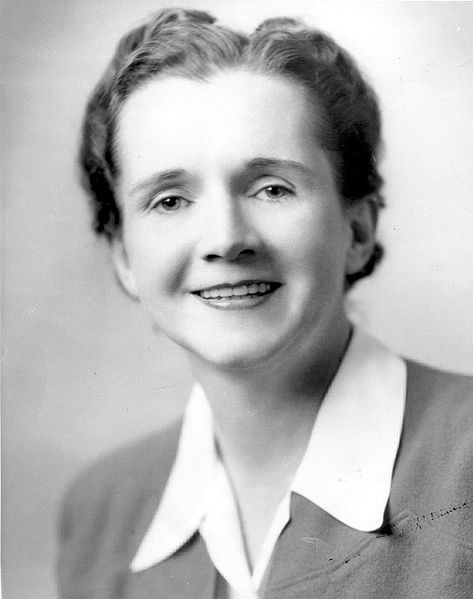
Rachel Carson (1907 – 1964)
Rachel Carson was always a student of nature. She used to go on long walks with her mother. When she attended college, she was going to major in English before switching to zoology after taking a class that drew her into biological studies during her sophomore year.
After college, she began teaching as faculty at the University of Maryland. She earned her Master’s degree at Johns Hopkins University a year after starting her teaching career.
Her time as a faculty member was short lived, however. She had to support her mother and two nieces after her father passed away. So, she took on a government job as an aquatic biologist for the Department of the Interior.
She started to also write articles about nature and eventually published her first book, Under the Sea in 1937. She continued to supplement her income by writing various articles and publications, sometimes winning money for her work.
In 1951, she published The Sea Around Us. It became a best-seller and would earn her a Guggenheim Fellowship. This allowed her to quit her job working as a government employee so she could devote her time to her writing. This was a book that looked at the sea, with a multi-disciplinary approach. Her eloquent words and writing captured the hearts of her readers.
A few years later, some friends would write to her telling her about how they had observed birds dying off after becoming victims of anti-mosquito pesticide at their farm in Massachusetts. Thus, not only were the mosquitoes wiped out, but organisms higher up the food chain were affected, as well.
This was a turning point for Carson. She began researching how modern agricultural practices with their use of pesticides were creating irreparable damage to the environment.
Despite a cancer diagnosis two years before, Carson published Silent Spring, warning against the uninhibited and widespread use pesticides in agriculture. She cited example after example of the harmful effects of pesticides like DDT and showed how birds, fish, and even human beings tested positive for DDT in their systems.
Silent Spring became an instant hit. Even politicians responded with a government investigation to curb the use of DDT and other harmful chemicals on food. She also pointed out how a number of pesticides were variants of nerve gases that were used in World War II.
As such, Carson catalyzed the modern day ecological movement. There were plenty of people who weren’t happy with her work, including a number of prominent businesses and politicians.
With her cancer getting worse, Carson watched as 42 state legislatures began adopting laws to curb pesticide use. She won “Conservationist of the Year” before her death in April of 1964.
How Carson Has Influenced Me
I discovered Rachel Carson by accident. Back in the late 90’s, I was taking an AP English class in high school. We had a reading assignment, and I ended up reading the wrong assignment: Elixirs of Death, a chapter from Carson’s Silent Spring. Though I received a “0” for my homework that day, I never forgot the lessons in Carson’s prose.
I already loved nature. Growing up, I spent as much time as possible outside. However, Carson opened my eyes to the fragility of the environment. She conveyed the complicated science of harmful chemicals to a world audience in plain English. Because of her efforts, she helped to spur a movement to help keep the environment a cleaner place and less subject to the effects of toxic chemicals – chemicals that could move up the food chain and into humans.
Biocides: Rachel Carson
Maya Angelou (1928 – 2014)
Maya Angelou is a prolific poet, but she’s also an author, activist and actress. Her early life was difficult: she was passed between her mother and grandmother. When she was only eight years old, her mother’s boyfriend sexually assaulted her. In turn, her uncles killed him. These traumatic events rendered Angelou mute for almost six years.
At age 16, Angelou found herself pregnant and gave birth to a baby boy, Guy. But, it seems that this was her turning point. Right after that, she began touring Europe and Africa, performing in Porgy and Bess. Subsequently, she became an activist for African American rights and joined the Harlem Writer’s Guild.
Her first autobiography, I Know Why the Caged Bird Sings met with rave reviews. It talked about Angelou’s first seventeen years of life. She would publish four more autobiographical novels after that.
She also wrote poetry and for her efforts, she won the Pulitzer Prize.
Her most famous moment, however, was when she read her poetry at the inauguration of Bill Clinton called On the Pulse of Morning.
Now, she still teaches and is a professor at Wake Forest University in North Carolina. Her works continue to inspire and win awards for her incredible work.
How Angelou Has Influenced Me
When I was in eighth grade, it was the year of the 1992 election. We held a “mock election” at my school. In a class filled with Republican “voters,” I was the only one who voted Democrat. I had led my own little campaign around my school and convinced the younger students to vote for Bill Clinton. Though no one else in my eighth grade class voted Democratic, and I got a lot of heat for it, but Bill Clinton won the election at my school.
After the national election, we watched Clinton’s inaugural address in January. I can say I don’t remember Bill Clinton’s speech, but I do remember Angelou’s. I was moved to tears at her poem. It spoke to me because I wanted peace, justice, happiness, and the pursuit of all that is good in this world. She united us that day and even my friends who had bullied me for standing on my own two feet were rendered speechless. We even hugged.
Angelou’s words made me probe my soul. Sure, I’d faced challenges, but they were no excuse to not rise up and face them, with my bright shining light.
Alas, just thinking of Angelou makes me feel like my writing is more poetic.
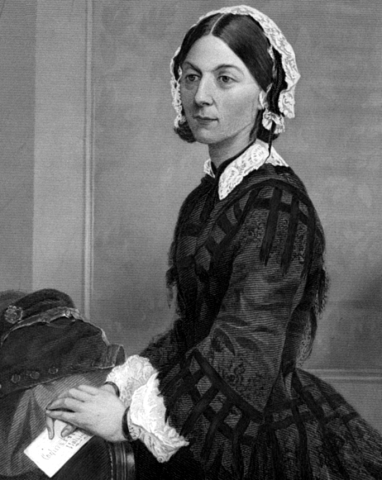
Florence Nightingale (1820 – 1910)
The daughter of wealthy parents, Florence Nightingale renounced her privileged status and became a nurse. This was scandalous in itself because at the time, nursing wasn’t a respected profession. In fact, it was something left for prostitutes and alcoholics.
Nightingale’s parents were perpetually shocked when their daughter shunned suitors and creature comforts. She was fascinated with the idea of altruism and helping others. She would often visit the sick and try to care for them – an unusual characteristic for a lady of her status.
When she was 17, she felt that she had received a direct message from God telling her that she needed to serve others. She didn’t yet know what that service looked like. But when she traveled to Alexandria, Egypt later on, she began to figure it out. She would study to be a nurse. She went to Germany and Paris, staying with various people in the nursing order. She also disobeyed her parents, who had forbidden her from becoming a nurse.
Her work would eventually take her to Turkey, where she treated soldiers and other victims in the Crimean War. She was horrified by the unclean conditions and the staff was so incredibly disorganized.
Florence’s leadership began to shine through. She started to order people to clean, made schedules, and stayed on top of her work, sometimes putting in 20-hour days. At night, she took a lantern and would check on the patients at the hospital where she worked. For this she became known as “The Lady With a Lamp.”
Despite opposition from fellow doctors and other nurses, Florence succeeded in reducing the mortality rate at the hospital from 42.2% to 2.2%.
She would eventually found a nursing school that would train nurses, focusing on hygiene, sanitation and maintaining public health. She effectively changed the face of nursing and graduates of her school often went to other hospitals to establish their own schools. Even after retiring, Nightingale still made contributions to her chosen profession through her writing and consultation.
How Nightingale Has Influenced Me
I used to think of my mother as a type of Florence Nightingale. My mother established a nursing home when I was quite young. I used to help her with her patients.
We once had a patient named Florence. This was when I first heard of Florence Nightingale, because stories about nurses and sanitation abounded when I was growing up.
My mother still works tirelessly for her patients, and she’s in her mid-70’s. I don’t think she’ll ever retire. But my mom taught me more about sanitation and the need for hygiene than I ever wanted to know. It was because of people like Florence Nightingale who pioneered modern nursing that ultimately would move the entire field onto a new level, and garner great respect in doing so. Today, nursing is a greatly respected profession.
In Memory of Elizabeth Edwards
Elizabeth Edwards (1949 – 2010)
Elizabeth Edwards' story is one of resilience - it's also the title of her autobiography. Her father was in the military while growing up, but she had been happy. She definitely had her fair share of challenges, though.
Elizabeth’s son Wade was killed in a car accident when he was just 16 years old. This left a chasm in her life. She resolved to have more children, because they made her and John happy. She was 48 when she had Emma Clair and 50 – with an AARP card – when she had Jack. She also had an older daughter, Cate.
Then in 2007, she felt a lump in her breast. She couldn’t tell her husband; it was just days before the presidential election when she found out, and they were on the campaign trail. But the day after the election, she found herself in Boston, getting a biopsy. It was cancer and the tumor had metastasized.
This was not the only blow in recent years for Elizabeth. She found out her husband had been unfaithful to her. Compound these maladies with the fact that their lives were so public.
For a woman in such pain, she plowed forward and did her best, no matter what obstacle was leveled against her. In her book, she talks about forgiveness, but that earning trust was a lot harder.
She was an incredibly noble woman, who wondered at life’s challenges, but moved forward in spite of them.
How Edwards Has Influenced Me
I always liked Elizabeth Edwards; she was a pillar of strength for John Edwards in his presidential campaign. When news of his affair hit the news circuit, I immediately thought of Elizabeth.
She not only a role model to me, but to my family. My own brother was killed in a car accident not long ago. Elizabeth’s words helped me to understand what my parents were going through. and her story offered me comfort when, at times, I wondered if I would ever find it.
Hillary Clinton (1947 –)
I include Hillary Clinton in this list not because she was First Lady of the United States but because she’s a woman of steel. Since she was young, she had been on the fast track to a career in law. Her success started early: she graduated from Yale.
Her accomplishments since becoming First Lady are what made me choose her for this list. She has never let up since having that role. She became a Senator and the Secretary of State. No other woman had been First Lady and then appointed to public office. She has been an advocate for educational reform, health care reform, and has campaigned for women’s rights.
Her aptitude for facing her opponents head on is superlative. If she wasn’t always this way, she might have started on that path when she was young. One day, she came home and told her mother that other children were bullying her in the street. Her mother made her go back outside and told her that no child of hers would be a victim of bullying and that she alone had to face them. She was not allowed back home until she did so.
She returned home later that day, having done exactly what her mother told her to do. It might have been tough love, but it sure helped to make her strong.
How Clinton Has Influenced Me
When I was fifteen, I was invited to a leadership conference in Denver, CO. The keynote speaker? Hillary Clinton. I had to meet this woman.
I went to the conference and I did meet her – from about ten feet away. She was having lunch and without thinking I spoke up and said, “Hello, Mrs. Clinton!” She had been conversing with someone else and glanced at me as if I were an annoying fly and dismissed me just as quickly.
At that moment, though, I knew that she didn’t have time for frivolities. I found out just how no-nonsense she was.
I also used to dream about meeting her daughter, Chelsea. Chelsea Clinton and I are about the same age. A good friend of mine went to Stanford University and was classmates with her and I always used to ask about her – we were all in college at the same time. I felt like, in some way, I had a connection with success.
Indeed, I do not know any of these people personally, and I probably won’t ever meet them. But I can say that their actions have directly affected my life in one way or another. I admire them for what they stand for, for facing their fears and challenges with grace, and for inspiring me to be all that I envision for myself.
Which Woman Is Most Inspiring To You?
El Arte de Escribir. Borsi, Emilia and Fay Rogg. McGraw-Hill: NY. 1994.
www.biography.com/people/maya-angelou-9185388 retrieved 8 Aug. 2012.
Extraordinary Women. Edmonson, Catherine M. Adams Media Corporation: MA. 1999.
The Great Women. Marlow, Joan. A & W Publishers: NY. 1979.
www.janegoodall.org retrieved 8 Aug. 2012.
Resilience. Edwards, Elizabeth. Broadway Books: NY. 2009.
A World of Ideas. Jacobus, Lee. St. Martin's Press: MA. 1994.
J.K. Rowling: The Wizard Behind Harry Potter. Shapiro, Marc. St. Martin's Griffin: NY. 2000.
© 2012 Cyn Lee
